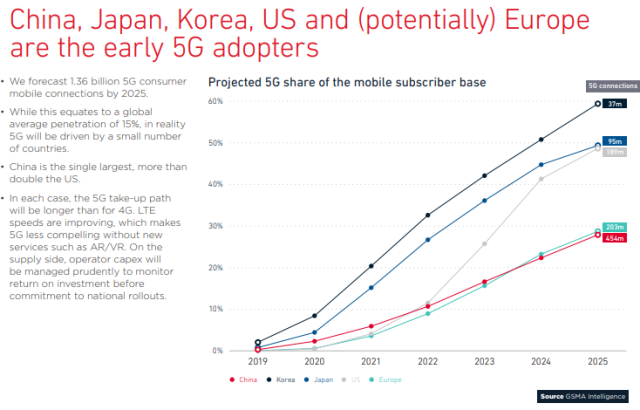Federal Communications Commission (FCC), the telecom regulator in the US, has started the country’s first 5G spectrum auction.
 FCC has not yet revealed the country’s target for mobilizing revenue from the 5G spectrum auction.
FCC has not yet revealed the country’s target for mobilizing revenue from the 5G spectrum auction.
US telecom operators such as AT&T, Verizon Communications, Sprint and T-Mobile US are working to acquire 5G spectrum and are developing 5G networks to spruce up their wireless ARPU.
Top smartphones vendors are expected to start selling 5G smartphones next year. There are indications that 5G smartphones will be very costly in the initial phase of the launch of 5G services for mobile phone users.
Telecom network suppliers such as Ericsson, Nokia, Huawei, Samsung and ZTE are eagerly awaiting for the outcome of the 5G spectrum auction. Media reports said the US has already banned Huawei from bidding for 5G equipment supply contracts.
5G spectrum auction
Telecom operators will start bidding for the 5G spectrum on Wednesday for spectrum in the 28 GHz band. They will also be bidding for spectrum in the 24 GHz band.
The FCC is making 1.55 gigahertz of spectrum available and the auctions will be followed by a 2019 auction of three more millimeter-wave spectrum bands — 37 GHz, 39 GHz, and 47 GHz.
“Between the auctions this year and next, the FCC will push almost 5 gigahertz of spectrum into the commercial marketplace over the course of the next 15 months,” FCC Chairman Ajit Pai said on Wednesday, who disclosed the planned auction in February.
5G networks are expected to be at least 100 times faster than current 4G networks and cut latency, or delays, to less than one-thousandth of a second from one-hundredth of a second in 4G and allowing for innovations in a number of different fields.
While millimeter-wave spectrum offers faster speeds, it cannot cover big geographic areas and will require significant new small cell infrastructure deployments.
FCC said the spectrum being auctioned over the next 15 months is more spectrum than is currently used for terrestrial mobile broadband by all wireless service providers combined.
FCC Commissioner Jessica Rosenworcel said the United States was following the lead of South Korea, the United Kingdom, Spain, Italy, Ireland, and Australia.
Last month, U.S. President Donald Trump signed a presidential memorandum directing the Commerce Department to develop a long-term comprehensive national spectrum strategy to prepare for the introduction of 5G, Reuters reported.
Trump is creating a White House Spectrum Strategy Task Force and wants federal agencies to report on government spectrum needs and review how spectrum can be shared with private sector users.





